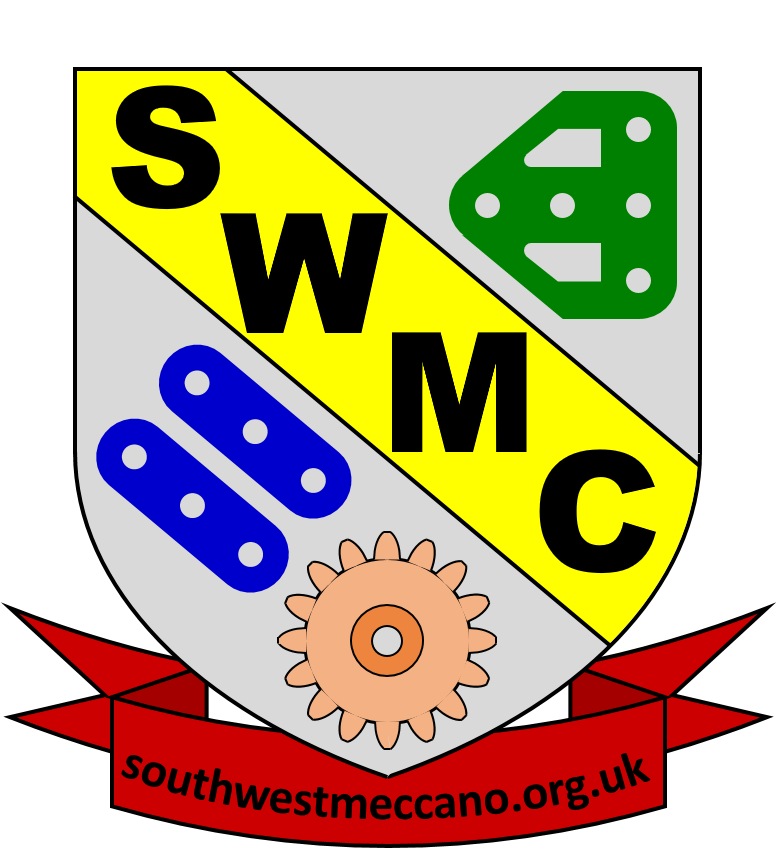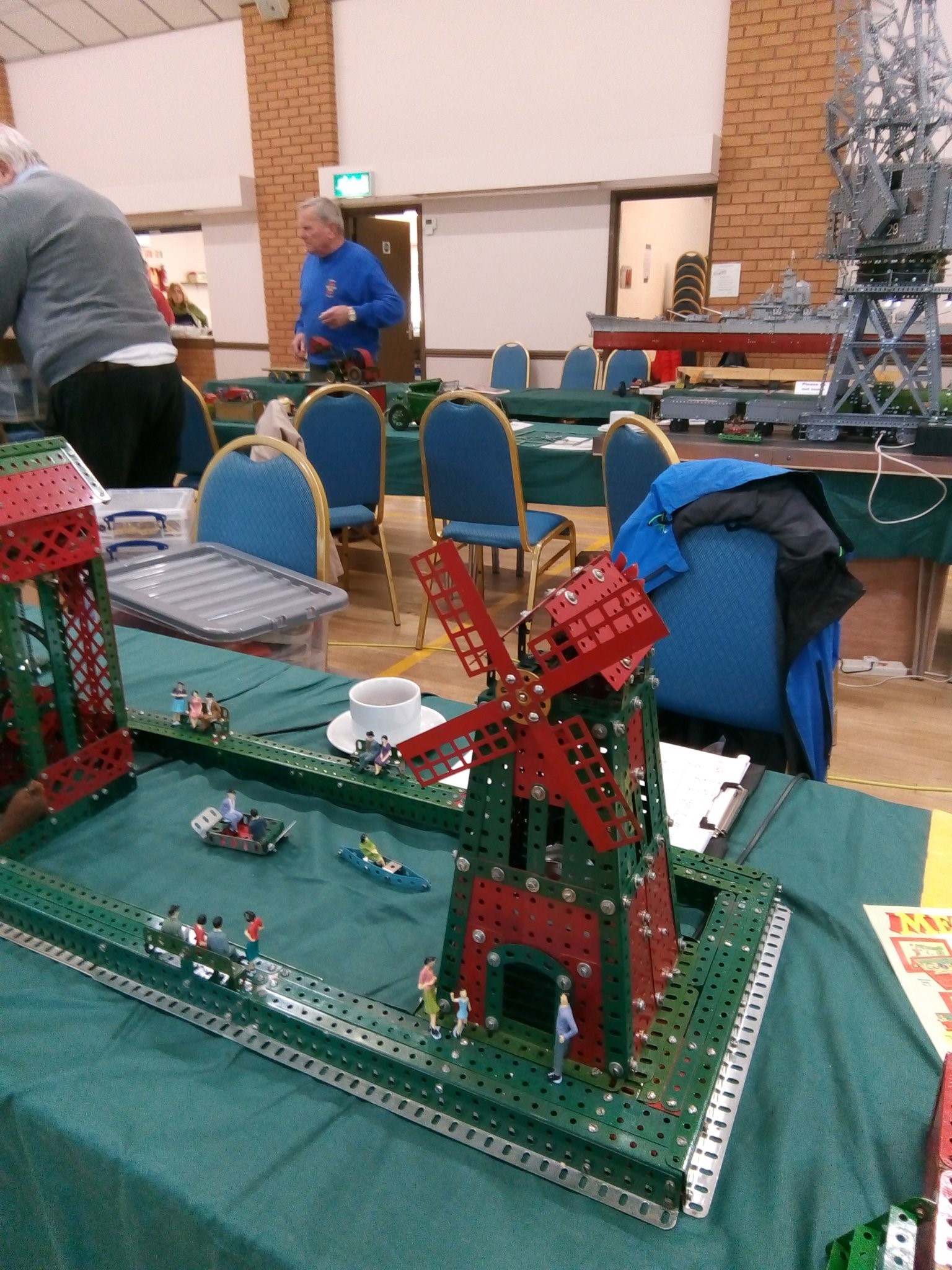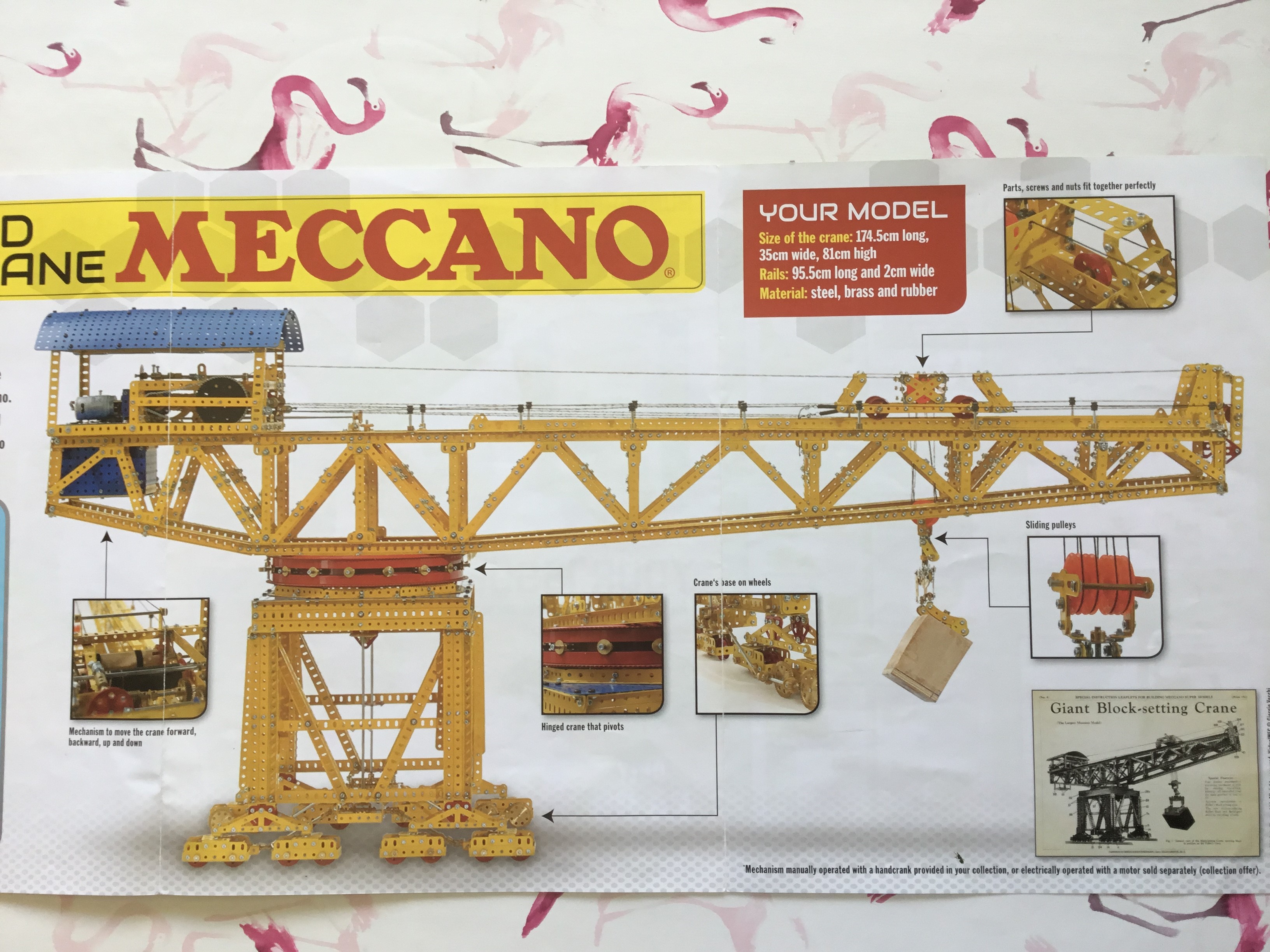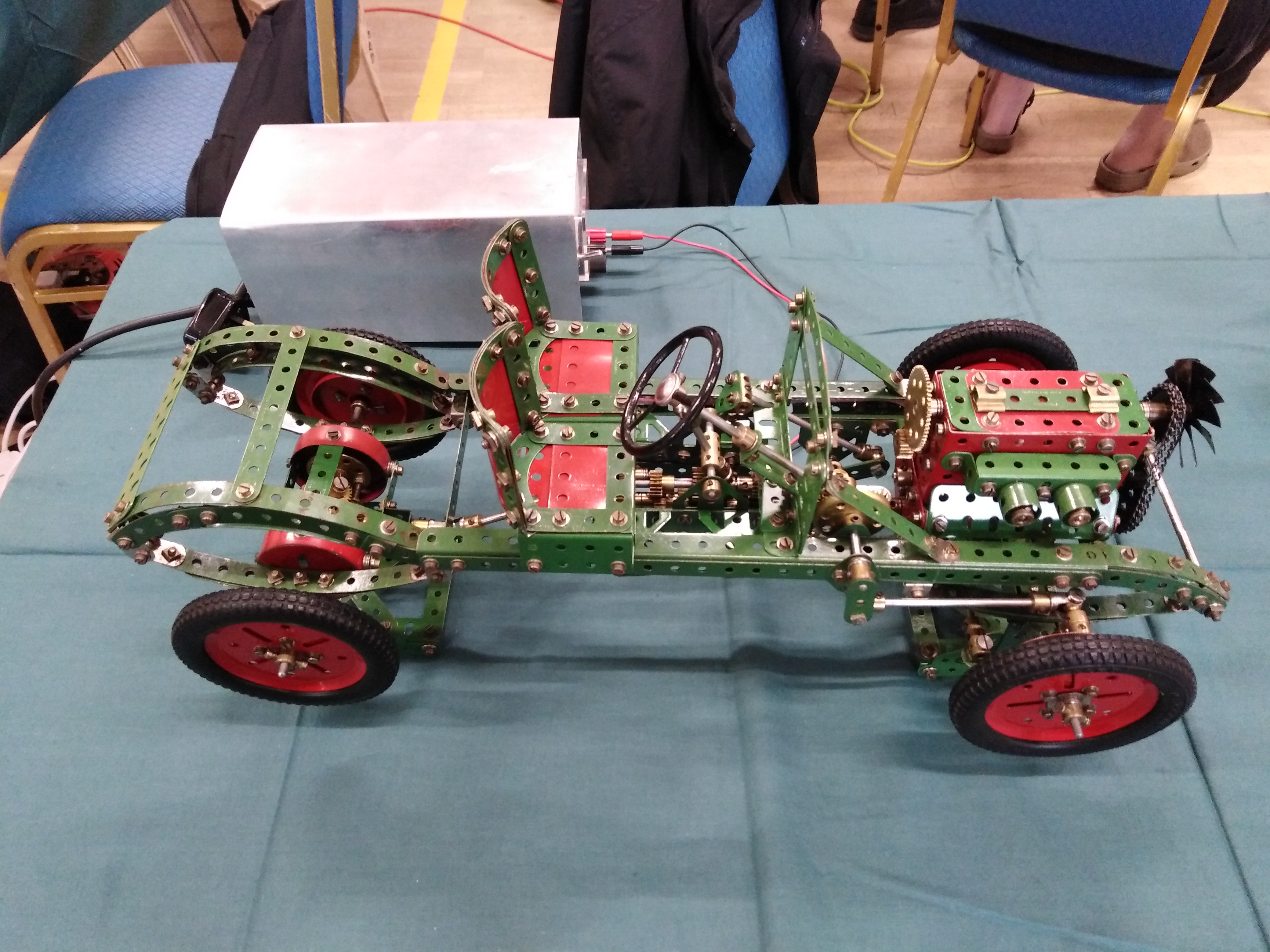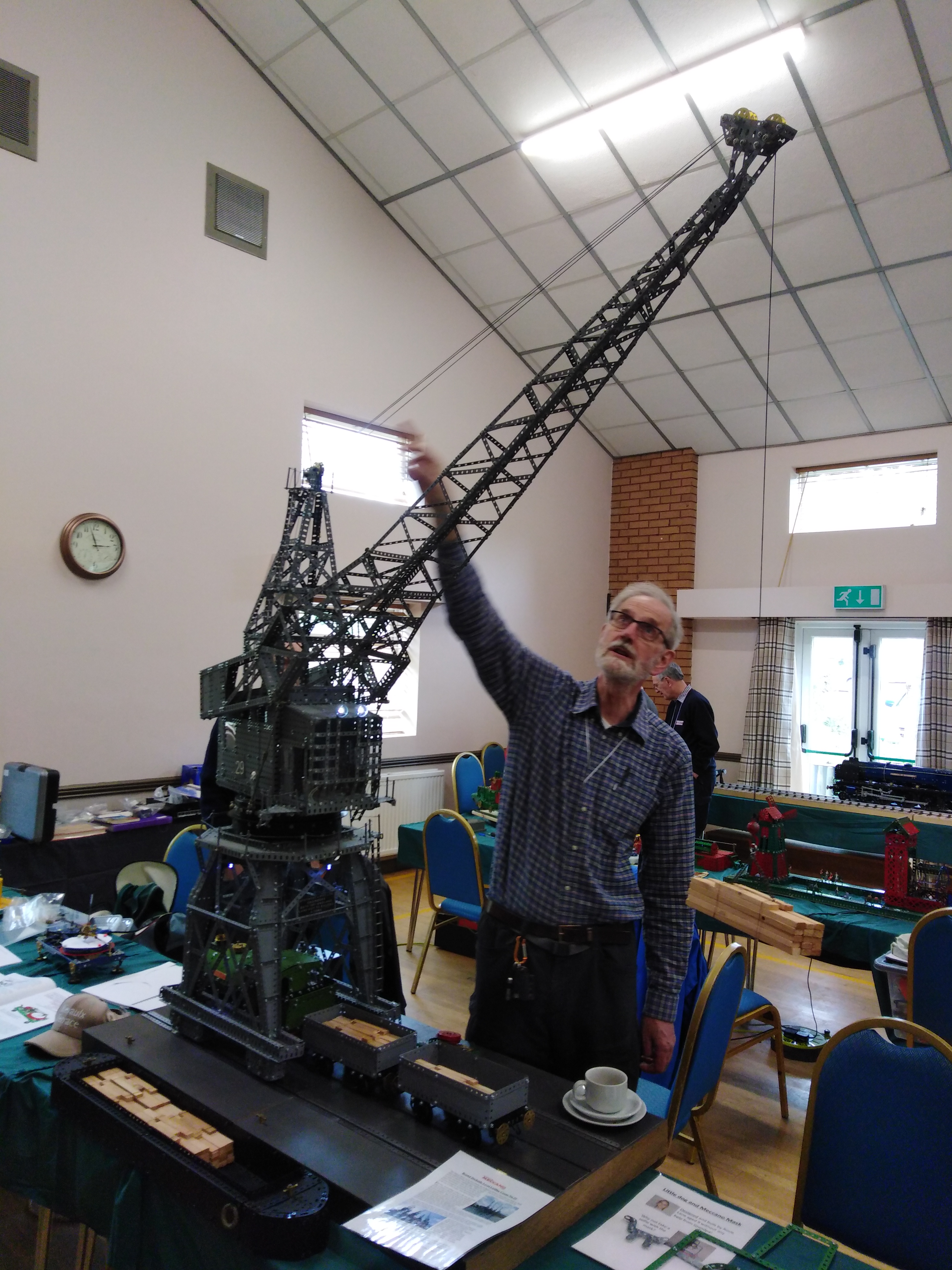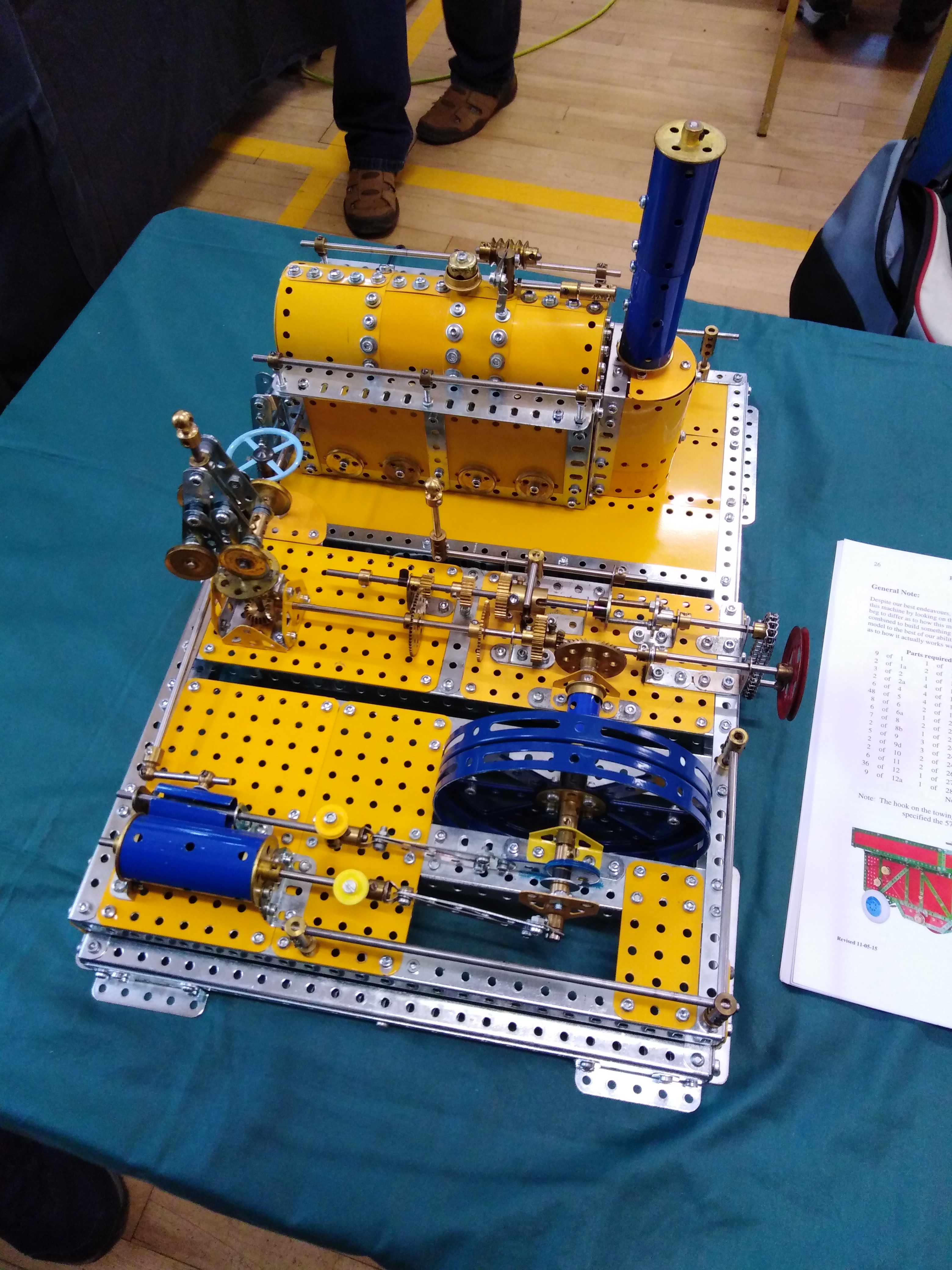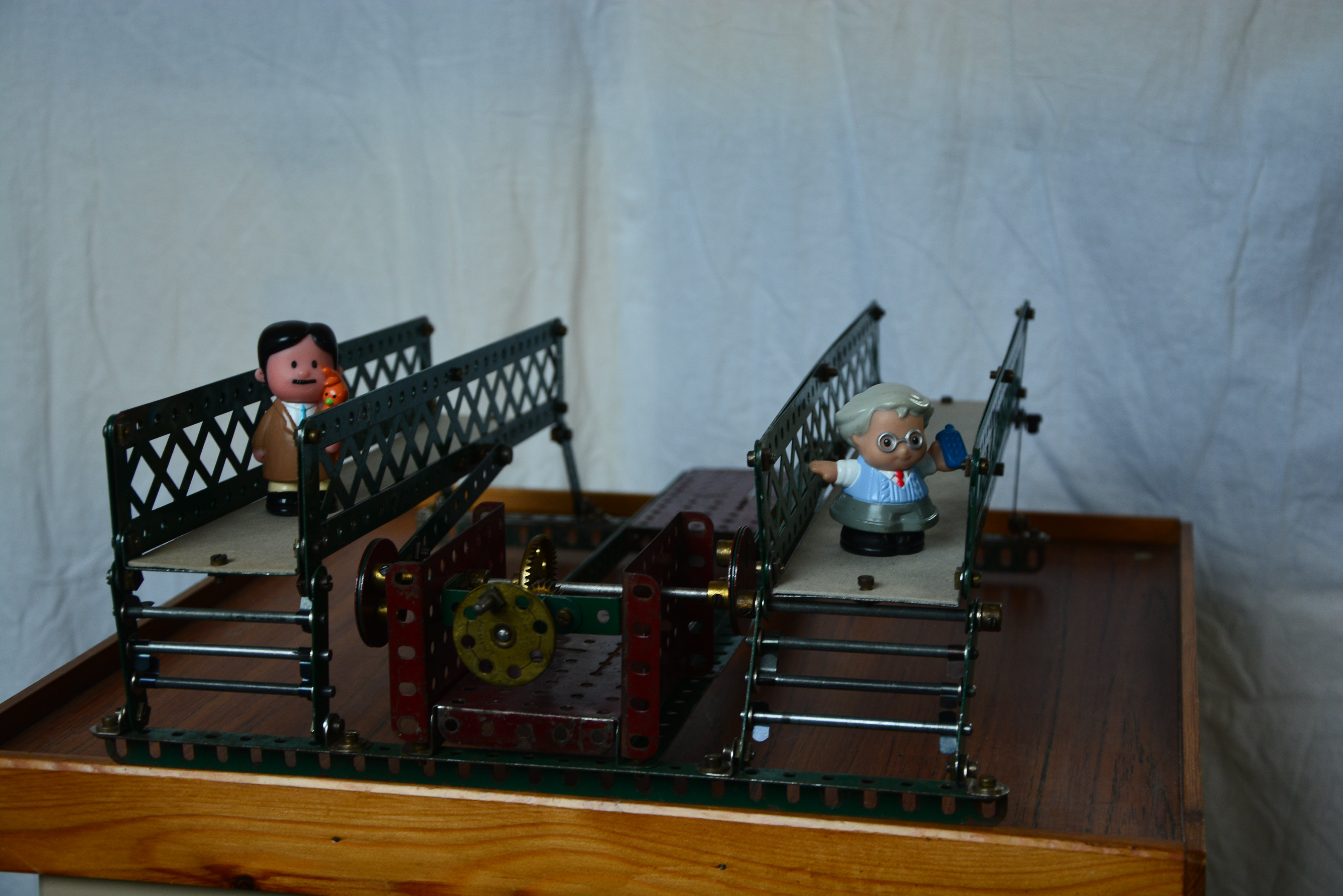Our 2019 April exhibition was at a new venue this year. Despite the stormy winds and showers, there was a very good turnout of members and models. The weather did unfortunately prevent Michael Edwards from attending, but Alan Perry managed to drop in briefly to say hello even though he could not attend the meeting properly. Many of the models had been given a previous outing, but were brought along for the benefit of the public to admire. Other models were either still work in progress or brand new for the exhibition, so in all it was a good mix.
The following write up is in the order as displayed around the run of tables.
Greg Worwood did us all proud with a superb large scale model of Stephenson's Rocket, pulling a third and first class carriage (in that order). It was based on information supplied in publications by the National Railway Museum. The model scale was set by using a large flanged ring for the driving wheels. Some of the building information was inconsistent, so the model shows the cylinders inclined at the original design of 35 deg. But in reality this caused a 'bounce' on the rails, so Stephenson adjusted this to 8 deg.
The open third class carriage sported a range of Barbie/Ken/Action man dolls (remember those?), as did the enclosed first class carriage. There was never a second class, but interestingly there was a fourth class in which passengers stood in an open truck. By 1840 the requirement was that all carriages had to be enclosed because of deaths due to the new phenomenon of windchill at the racy speeds of 40mph!
Richard Smith displayed his beautiful loco ‘Duchess of Devonshire’ in post war livery, with first and third class carriages. 37 such engines were built between 1937 and 1940. The model’s locomotion has been improved by the addition of black rubber ‘bands’ over the rims of the driving wheels to improve adhesion. These were ingeniously made from tyre inner tubes. The loco was able to be remotely controlled to run up and down a realistic length of track. Notably, the ‘gravel’ between the sleepers was created using real particulates in a PVA glue mix, giving a very realistic appearance.
Continuing the railway theme, Neil Bedford demonstrated his work-in-progress Darjeeling Himalayan railway. Adopting the hard approach, the power to the loco was transmitted via the rails, which made the transition over the manually operated points a challenge. This is Neil’s first try at building a train, so a new learning experience. As a nice touch, the man at the end of the loco appeared to operate the change in forward/reverse motion when the loco reached the end of the track.
Neil also brought along his blue and gold Morgan 3-wheeler, first shown in January.
Hugh Barr displayed two models from the ‘SM’ plans range. The first was an early work-in-progress of the SM15 Baltic Tank Locomotive, in red and green. The second was the SM11 Single Cylinder Horizontal Steam Engine with a variable speed controller. This type of engine used to provide the drive to machines in factories.
Andrew Jefferis displayed a water based diorama of a river scene with a waterwheel at one end, and a windmill at the other. In between were some small pleasure boats, and the complete scene was populated with scale figures all the way from China. The drive motors were mains powered of the type used in domestic microwaves.
Another fairground model was shown by Philip Bond. The ‘Chair-o-Plane’ was an original build, and made very good use of a modern Meccano part to form the upper surround. The supporting fabricated roller bearing was very effective in providing a smooth and free running core rotation.
Philip also gave his open chassis - possibly based on a Bentley - another airing. In this particular type of car, Philip says that the co-driver operated the clutch, which brings new meaning to driving teamwork!
Mark Bridle demonstrated his rope making machine, which spun three smaller cords into becoming a heavier duty 'rope'. Obtaining the correct type of small cord for the operation is important as it has to be wound in the opposite direction to that of the lay of the final rope. This detail ensures that the rope remains wound tight. Another crucial factor that Mark had to tune is the tension on the three bobbins, otherwise the rope would not be made with an even twist.
Alongside this was a 1957 tower crane as seen in an issue of 'Meccano Magazine'. Apparently though, the original plan was hopeless, and improvements by Mark were necessary. One of these was to use chains over sprockets (then connected to the strings) to ensure a positive drive.
Philip Drew displayed a very clean looking Falkirk Wheel. The actual wheel is a brilliant piece of engineering which effectively joins the Forth&Clyde canal to the Union canal, despite them being on vastly different levels. The two boat caissons carry a combined load of 500 tonnes. Philip explained that as the boats always displace their own weight in water (remember Archimedes’ Principle?) the two caissons will always be perfectly balanced regardless of how many boats are in each. This means it only requires 22.5kW of hydraulic motive power to operate each cycle.
The model had been intended as a component in Philip’s Tricky Track, but the required scale meant that it would have been too big and heavy, so it is now presented as a standalone model.
Pete Evans continued the fairground theme with his Herschell Carousel. The design is by the late Keith Cameron, possibly from sometime in the 1960’s, but which did appear in an issue the MMGG in 1988. This particular model includes a rare ‘crinkly’ flag on the top.
Also being displayed by Pete were a 1929 set 4 in dark red/green and an E set in blue/gold which included original cardboard 'plates'.
Pete also showed some Meccano constructor's cars in beautiful condition.
Next to these were a 1950’s factory built display model of a lifting shovel, and a 1931 MGF2 Magna car, one of which Pete actually owned and drove for over 20 years.
Chris Bates brought his Bristol Dockside crane diorama. The actual crane, by Stothert & Pitt Ltd. still operates as a working demonstrator on the quayside in Bristol. The model can traverse on its rails, powered by two very small motors with worm drive reduction, despite the model weighing around 58lbs (that’s over 26kg to the younger minds).
Alongside Chris’s crane were creations by his 9 year old Granddaughter. These were a Meccano frame ‘mask’, plus a small Meccano dog, wholly designed and built by Rosie. Excellent!
Martin Arnold demonstrated his build of two ‘Andreas konkoly’ creations. Firstly a Meccanograph, capable of drawing different patterns as determined by the gearing and cam positions.
Secondly a Wilesco Steam Engine. This normally would have been operated with a 4 speed gearbox, but this version was built with a 3 speed box.
Sam Medworth displayed a variety of models, starting with a classic Meccano Concorde, of which Bristol played a large part in the creation of the real plane (one of which is now on display in the Bristol Aerospace Museum).
You can see more information about these Fairground models Sam Medworth's Fairground Models page.
Finishing the fairground display was Sam's colourful ferris wheel originally made by Meccano's cousin 'Erector' from the USA.
Lastly was a ‘whip’ roundabout and a hand cranked acrobat made by our late founder Malcolm Hanson.
To mark the 100th anniversary of the Meccano Guild, Sam displayed his recently found Meccano Guild Certificates from his early Meccano days. It was amusingly noted that there was never any expectation of girls being interested in such things during those early times.
Steve Briancourt once again displayed the latest incarnation of his USS Missouri. This large model has taken years to build, and each time on display shows more progress. It is hoped to be finished this year ready for other exhibitions.
The latest additions included full decking on the forward and aft sections, painted in a realistic wood grain effect to simulate the teak deck on the real ship. The aft deck also included the two ‘Vought OS2U Kingfisher’ spotter planes mounted on their steam catapults, plus the crane used to retrieve them from the water.
More Bofors guns have appeared in various places, and there are still more to come! The weight of the individual sections is now becoming a problem for offering into position for assembly, so Steve is now thinking of ways to ease this particular challenge.
The Scrapheap Challenge (a device to autonomously travel exactly 20ft) was a great success with many entries. The variety of designs showed how the same set of challenge requirements can be met in such diverse ways. There were several which came within a few millimetres of the target line over the three attempts allowed, but the winner stopped dead on the line on its third outing. Many congratulations to Ian Jeeves for that achievement.
The Ben Johnson Trophy was awarded to Greg Worwood for his terrific Stephenson’s Rocket.
The whole day was excellently catered for with an array of freshly made sandwiches, cakes and other goodies, and drinks throughout the day. This was very much appreciated by all, so a special thanks go to Linda, Marion and Dianne for all their efforts and patience. Thanks also to the many members who donated cakes and biscuits.
The day finished with an auction of some Meccano on behalf of a non-member. Thanks to all who attended, and we look forward to our next display at the Bristol M Shed on 25th May.
